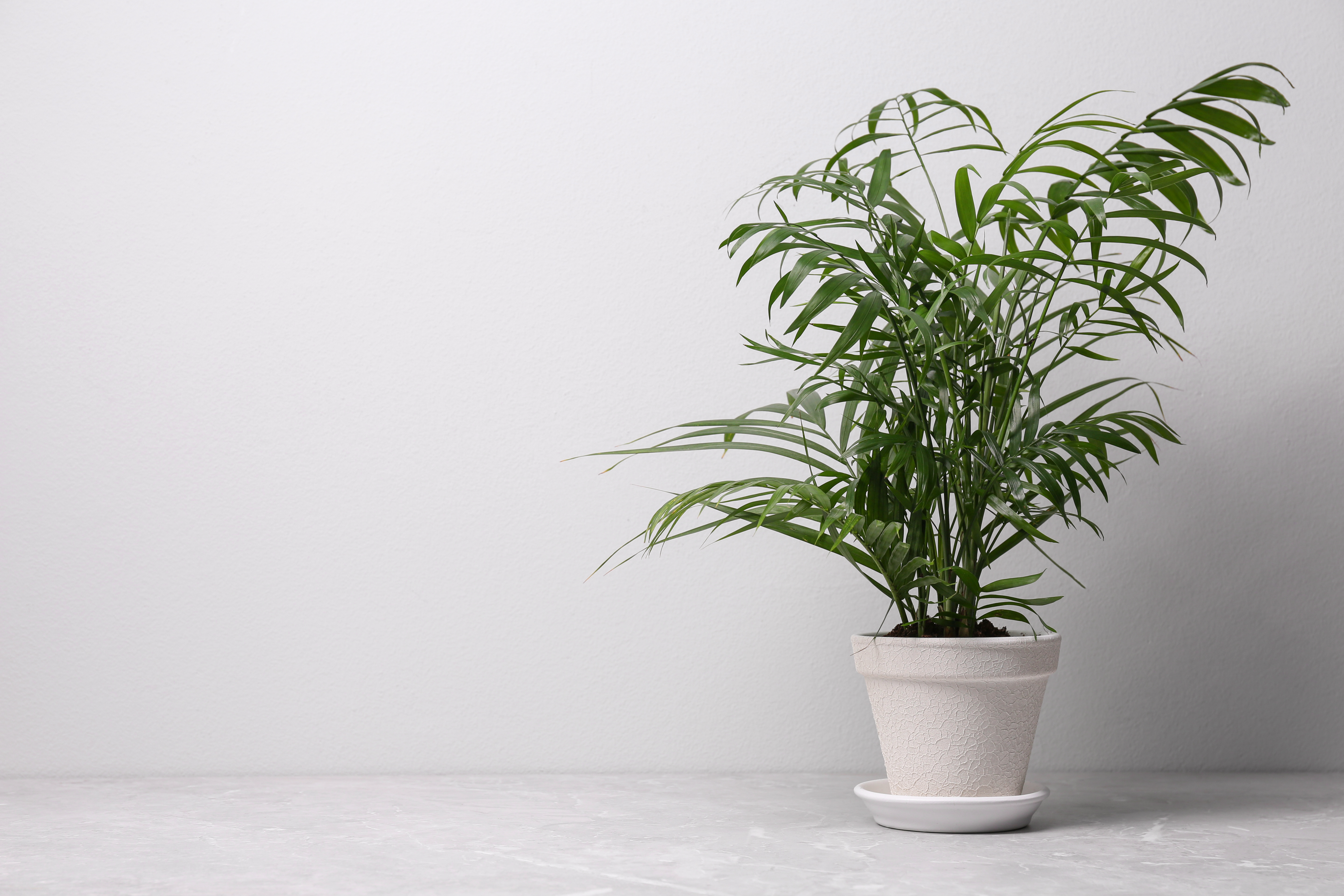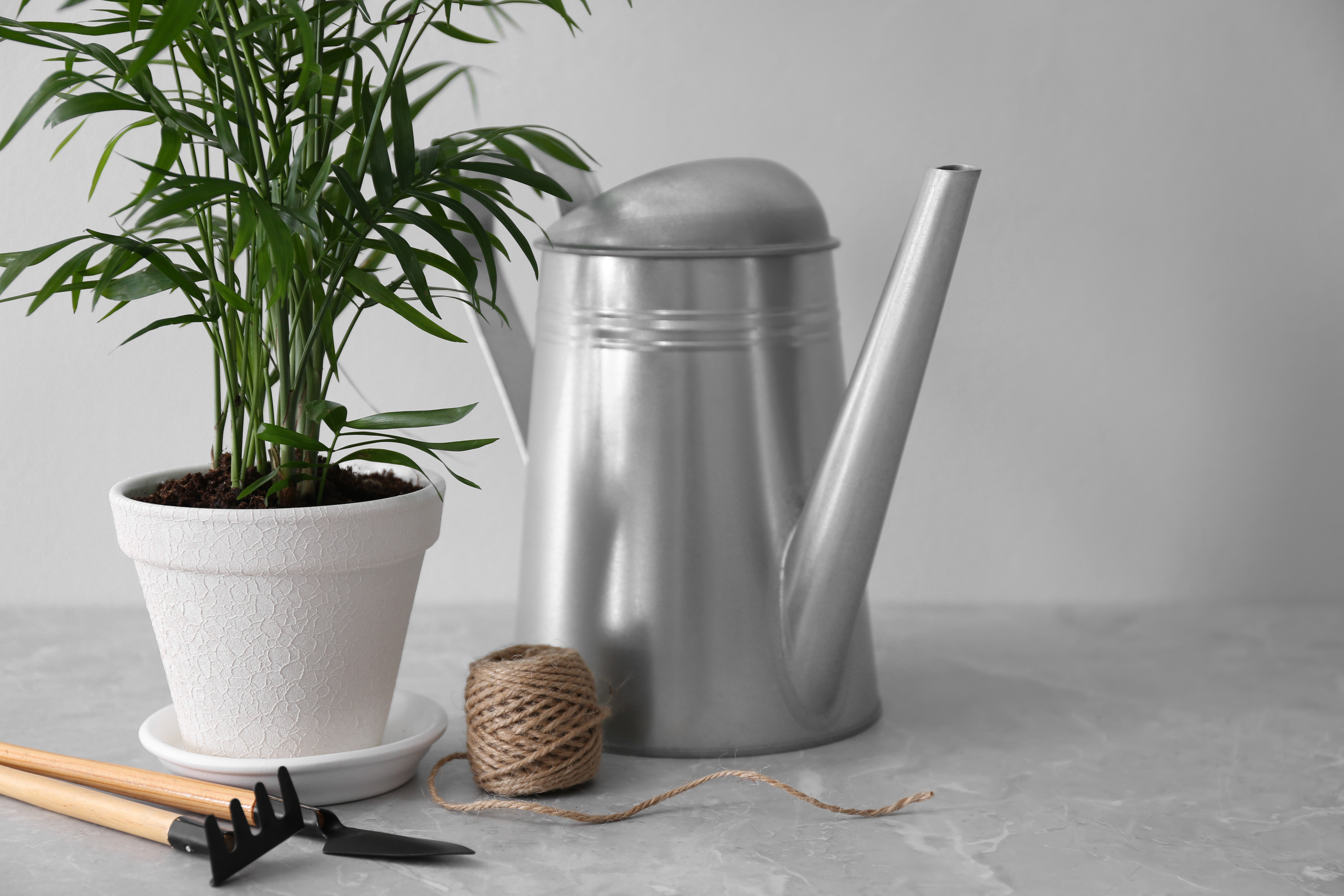Origin
Ravenea rivularis, commonly known as 'Majestic Palm', is a large houseplant that grows slowly but surely to sizes of up to 10 ft (just over 3 meters) when grown indoors, or up to 90 ft (almost 30 m) in its native environment!
Speaking of their natural habitat, Majestic Palms actually have a very small pocket in which they occur in the wild, and they are unfortunately endangered as a wild species. They originate from Madagascar, where they are well-adapted to hot, humid conditions which can potentially be hard to replicate indoors. For this reason, Majestic Palms can sometimes be a little picky when kept as an indoor houseplant.
However, if you're able to get past their temperamentality and manage to keep yours happy, they make a beautiful and impressive decorative plant, plus they're a pet-friendly choice as they're non-toxic.
They first gained popularity as a houseplant in America in the '90s, and have since quickly become a common choice for more experienced plant owners to have in their homes.

Care
These plants need the perfect balance of heat, light, water and fertilization, so they can for sure be a bit tricky - especially to grow indoors.
If any of these factors become unbalanced, your Majestic Palm can quickly start to look a bit unhappy. For example, scorching / browning of the leaves can occur in response to too much light (when not offset by sufficient water and fertilization). Dry air can also cause the leaves to dry up and become brown - remember that your Palm is used to warm, high humidity conditions in the wild. Yellowing leaves, on the other hand, are a sign that you're overwatering your Palm. Additionally, they don't like being exposed to cold drafts, so try to keep it away from any drafty spots in your home.
As we mentioned above, Majestic Palms can grow pretty large (although they do this slowly). As such, your plant needs enough space to be able to expand, as overcrowding can have a negative impact on its health. It's a good idea to repot it around once a year - a sign that repotting is needed is when you can see roots popping up in the soil.
They like to have a lot of light and plenty of water, although it's important to ensure you don't overwater it. Make sure yours is planted in a pot with drainage holes, and never let it sit in water for a prolonged period of time, as too much water can cause root rot to develop, which is typically very hard for a plant to recover from.

Other
If your Majestic Palm isn't kept in humid enough conditions, it can unfortunately be prone to potentially developing a pest problem - another reason to ensure yours isn't kept overly dry! If your home isn't naturally humid, you may want to set up a pebble tray or invest in a humidifier for your Palm.
In the wild, the leaves can grow up to 8 feet (2.5 m) long!
In their natural habitat, they can also produce flowers and fruits, but this is very unlikely to happen to an indoor-grown Majestic Palm.
One fun fact about palm trees in general, including the Majestic Palm, is that they're not actually trees at all - they're grasses. Although they're much larger than your typical garden grass, they also tend to grow taller rather than wider (up to a point).